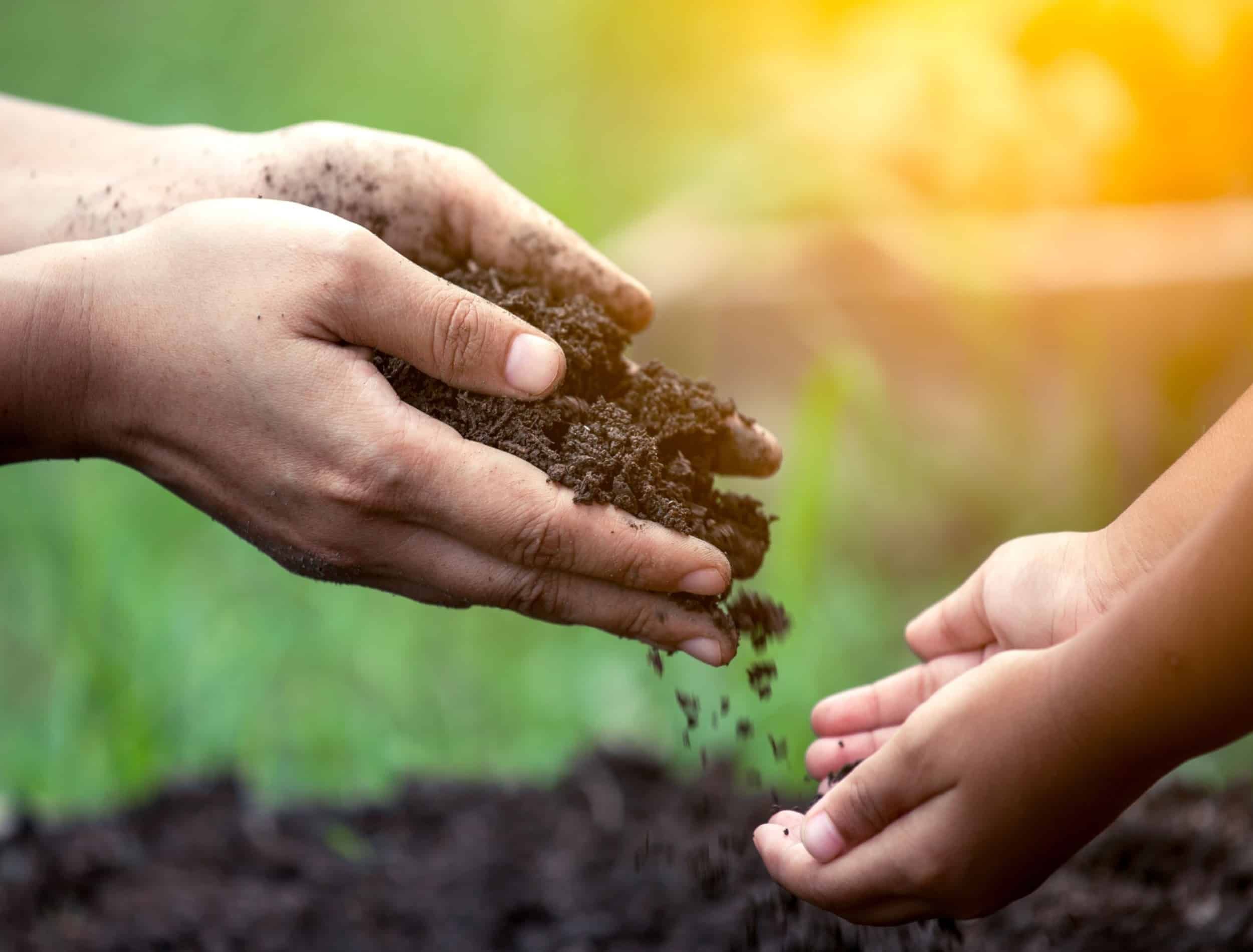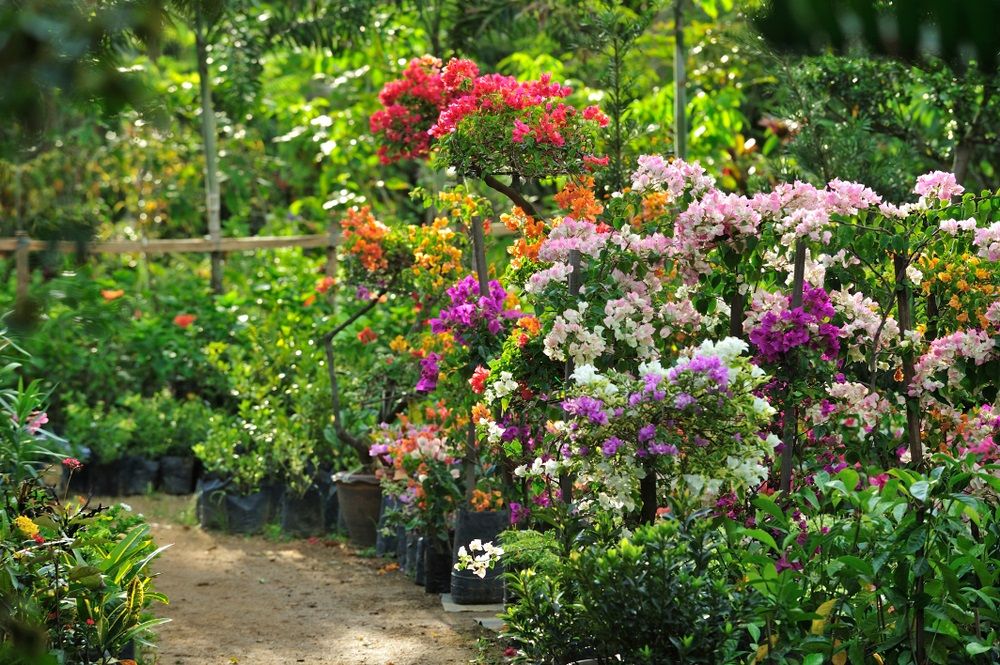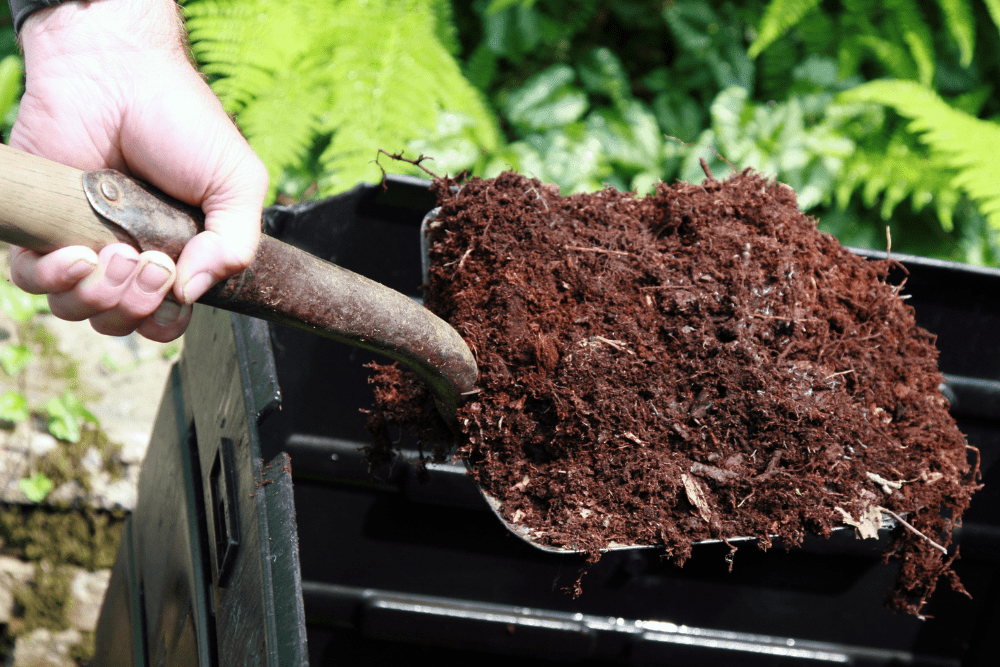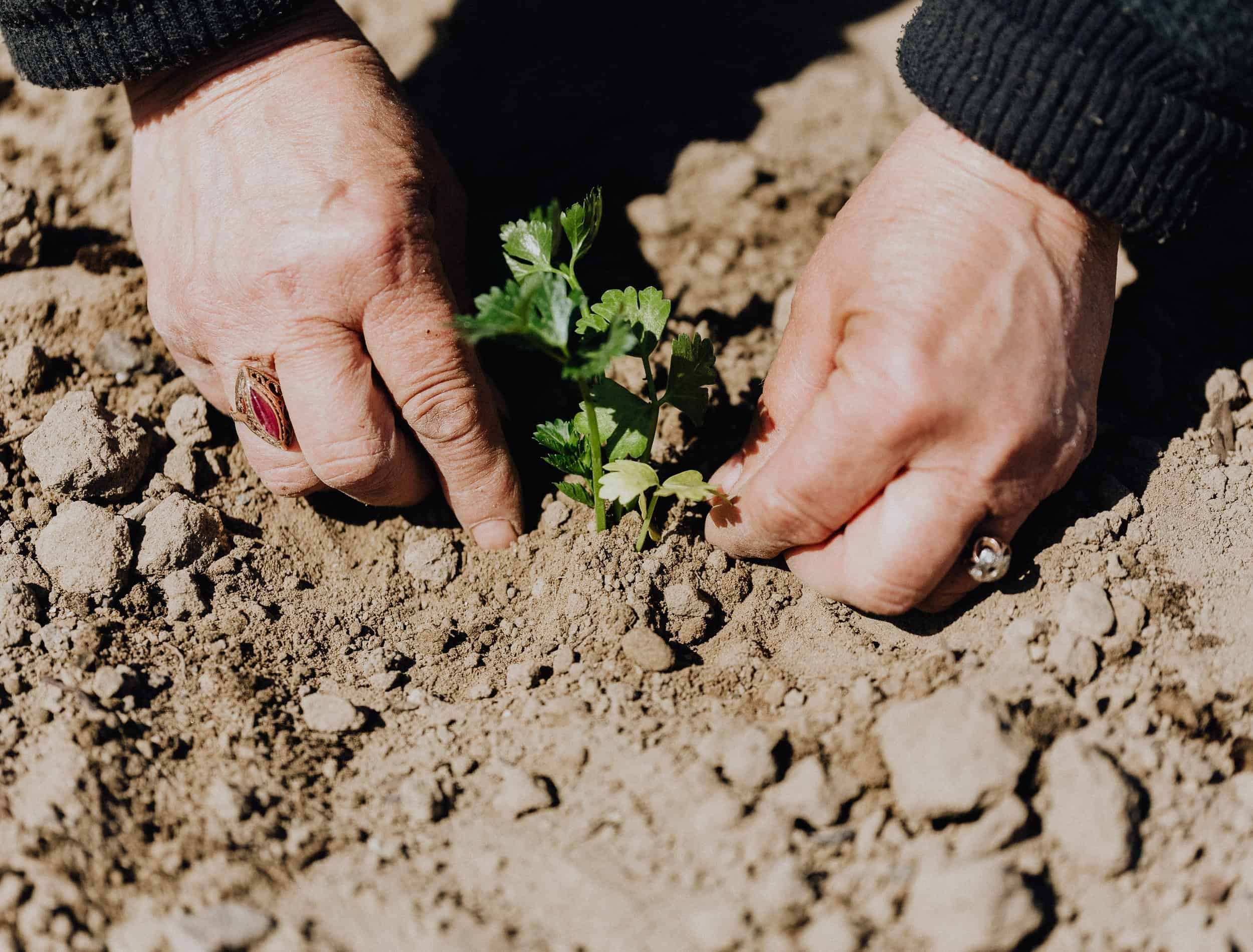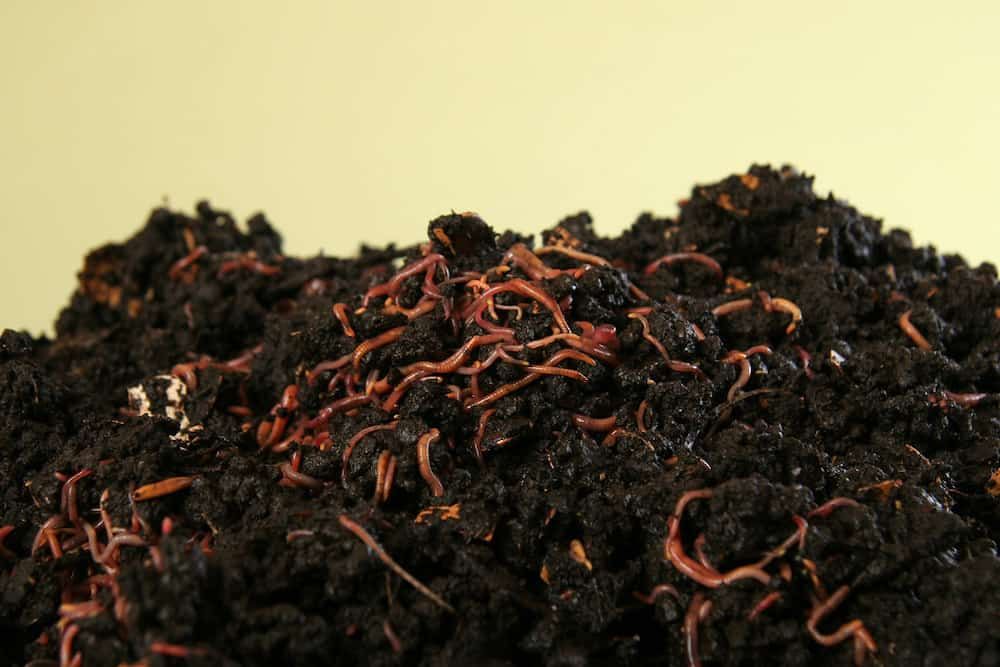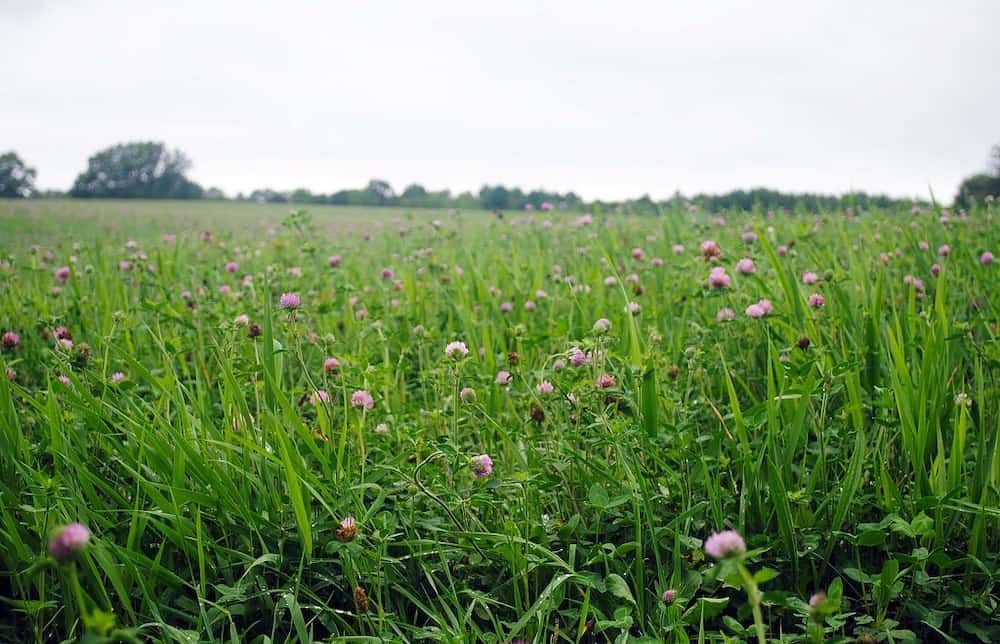Good garden soil promotes healthy plant growth, holds vital nutrients, and acts as a water regulator. While different plants have different soil preferences, most plants prefer soil that has a balance of sandy, silt, and clay soils mixed with organic matter or compost. Of course, to know which amendments your soil and plant needs, you should first test your soil.
Aeration, infiltration, and drainage are important components of good garden soil structure. Since garden soil often lacks minerals, it might need amending from the start. Improving garden soil is crucial for your plants' health because soil with structural or nutrient deficiencies will not grow healthy plants. Once you know what your soil needs, follow these five simple techniques to try to improve your garden soil.
1. Recycle Perennial "Parts" for Improved Soil Structure
Image credit: IZZ HAZEL via Shutterstock
Perennials can live anywhere between three years to multiple decades if they're maintained well. And since they're easy to grow and propagate, you can multiply these hardy plants virtually cost-free. But, did you know you can recycle perennial "parts" to amend your garden soil?
If you have winter and early spring hedge trimmings, tree prunings, or perennial cuttings, use them as natural mulch. Doing this will impede the growth of weeds while maintaining moisture levels in the soil. If your trimmings, prunings, and cuttings are still green, they can provide nitrogen to the soil as they break down.
2. Add Nitrogen To Boost Plant Growth
Image credits: Onfokus via Canva
Nitrogen is important for the soil because it contributes to plant growth and the creation of chlorophyll, the green pigment in plants. Chlorophyll molecules absorb light and store it as energy, which the plant uses during photosynthesis to create food or flowers (yield). Since garden soil is often short on nitrogen (because of multiple plant absorption, soil organisms, gaseous loss, runoff, erosion, and leaching), it is important to restore it for the long-term health of your soil.
You can add nitrogen to your soil from organic supplements, including compost, manure, and feather meal, which are all natural sources of slow-release nitrogen. Ideally, add these organic fertilizers into the soil before planting, but if that's not possible, you can dress the sides of your plant stems with the nitrogen supplement of your choice to improve your garden soil.
3. Supplement Mineral Deficiencies
Image credits: Karolina Grabowska via Pexels
Soil recycles nutrients in a self-regulating manner. Across many biomes, carbon and other nutrients can be found either above ground in organic matter or underground in the roots of perennial plants. Animals graze these plants and provide fertilizer to the soil through manure, helping replenish nutrients. Since most backyards aren't filled with grazing animals, garden soil cannot properly replenish its minerals and nutrients, especially in time for the growing season.
To ensure that your garden soil has proper nutrition for the upcoming season, test your garden soil and soil pH. You can also get a professionals help to address your soil's mineral and nutrient deficiencies before the start of the growing season. Test your soil every three to five years after harvest in autumn or before spring fertilization. Do not test right after applying lime, fertilizer, or manure to your soil.
4. Let the Earthworms Do the Tilling
Image credits: Sustainable sanitation via Creative Commons
Tilling is a thorough form of soil cultivation, which involves breaking up and loosening garden soil to maximize the retention and circulation of air, water, and nutrients. Loosening the crusty surface of the soil can provide your plant roots with easier access to nutrients and minerals.
Tilling is necessary when preparing a new garden bed or incorporating large amounts of organic material into the soil. It cultivates the soil between 8 and 10 inches deep, sometimes even more if you are creating a new garden bed in an area where the soil is very poor.
But this process of digging, stirring, and overturning the soil can accidentally harm earthworms, which isn't always a good thing. Earthworms can actually be your soil's best friend!
Earthworms in your soil are a sign that the ground is rich in organic matter. It's all comes down to cultivating that matter further into the soil.
The slimy worms burrow deep into the soil, breaking down the organic matter, speeding up the decomposition process, and leaving behind nutrient-rich casts that boost plant growth. Earthworms and their casts improve soil aeration, infiltration, and structure.
You can get the worms to till your soil with sheet mulching, which is adding layers upon layers of different mulches on your soil's surface. Although you can sheet mulch any time of the year, wait at least three months for everything to break down before planting.
You can begin with a layer of cardboard on your existing vegetation. Then, alternately pile two to four layers of green and brown compost to invite worms to burrow. During this process, the worms will transport their castings whilst improving the soil structure.
5. Grow Cover Crops
Image credits: U. S. Fish and Wildlife Service - Northeast Region via Creative Commons
Cover crops, also known as green manure, are plants that prevent soil erosion, improve soil health, enhance water availability, smother weeds, help control pests and diseases, and increase biodiversity and the visual appeal of a garden! These plants have many benefits and come in a variety of species that you can plant at various times of the year.
In summer, you can plant buckwheat that reaches maturity in just 10 to 12 weeks. Buckwheat attracts beneficial insects and pollinators with its clustered white, yellow, or pink blossoms, and after maturity, its residue decomposes quickly, enriching the soil with organic matter.
In autumn consider planting vetch, an annual hardy crop that has over 200 varieties. Cow vetch bears dazzling purple blossoms serve as a feeding spot for beneficial insects and butterflies. Hairy vetch imparts large amounts of nitrogen into the soil, prevents erosion, and helps improve the tilth of the soil. Following its robust growth, hairy vetch serves as dead mulch on the soil surface, maintaining moisture levels and suppressing weeds.
Note: Some US states have listed cow and hairy vetch as invasive species. Please check local laws before planting.
Get Gardening!
And just like that, amending your soil has become clearer and more efficient. If your garden soil isn't great at regulating its nutrients, these techniques can give your garden soil the nudge it needs to maintain a good structure for optimum plant growth.
Hopefully, this article has helped you understand how to improve your garden soil. As always, share your experiences and questions in the comment section down below. Don't forget to share the article if you liked it!

